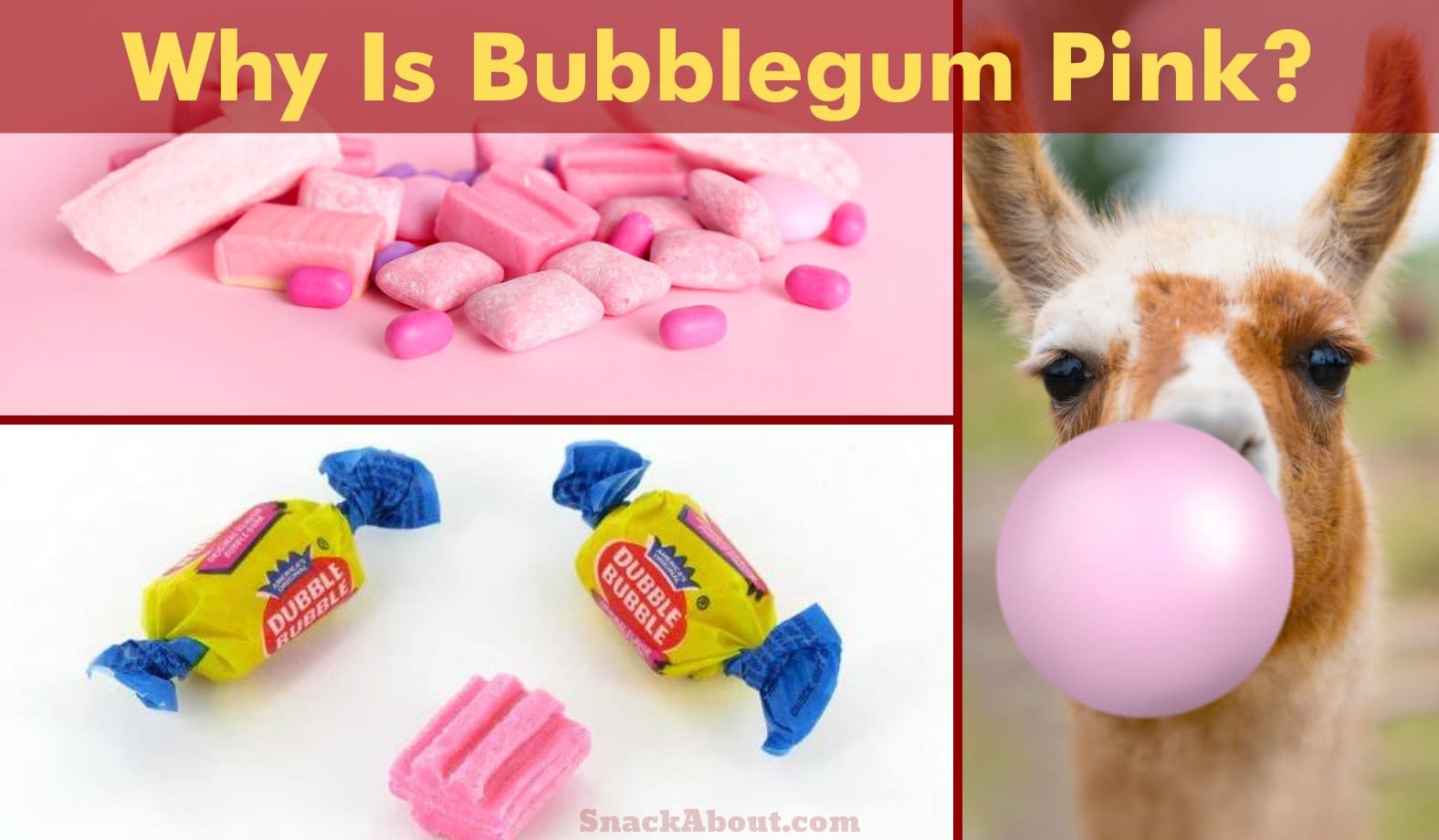Contents
Why Is Bubble Gum Pink?
Bubble gum is pink because the inventor, Walter E. Diemer, added red food coloring to his gum base while creating his original bubble gum formula. While he was inventing bubble gum it came out to be an unappetizing, grey color.
Diemer decided that this color would not work for his chewing gum – and he’s right! One of the reasons gum became popular was partly thanks to the more appealing color.
How bubble gum color came to be
Diemer’s company, Fleer Chewing Gum, in Philadelphia, only had red food dye on hand. Knowing this he added the red coloring to the grey gum.
Because of the already-present grey hue, the red dye turned the gum into its iconic bright pink color instead of a regular red.
Diemer’s pink bubble gum was a hit with the consumers and the bright pink color became iconic. Today, many bubble gum companies still use pink because the hue is so closely associated with the product.
Although many companies have released bubble gum in other colors like blue, green, and purple (especially for different flavors like blueberry, green apple, and grape), bright pink remains the traditional bubble gum color. It’s the color still preferred by most bubble gum manufacturers as well.
What Flavor Is Pink Bubble Gum?
The flavor of pink bubble gum generally varies from company to company. Most create the taste of bubble gum by combining various synthetic flavors, called esters, with sugar and other ingredients.
It’s also often a combination of different fruit flavors as you’ll see here.
Mixed fruit flavors that make pink bubble gum flavor
Although the actual flavor of bubble gum is synthetic in most cases, it’s possible to create the flavor naturally to a degree.
The fruity flavor can come from pineapple and banana and sometimes includes lemon, orange, and cherry.
Some more interesting bubble gum flavor facts:
- Bubble gum flavor requires some spices, specifically cinnamon and cloves.
- Sometimes a hint of vanilla is added as well to give depth to the bubble gum flavor.
- Some bubble gum companies long sold bubble or chewing gum flavored like specific fruit instead of the general bubble gum taste.
Specialty flavors can include all kinds of interesting (and delicious!) fruity flavors such as watermelon, blue raspberry, strawberry, grape, and green apple, among many others. Although some are not really close to the real fruit flavor, they’re usually similar.
Some actually feature real fruit juice in addition to their artificial flavoring counterparts used to make the product more appealing. Fruit-flavored bubble gum is sold as a variation of the original pink bubble gum option with the specialty flavor marked on the package along with pictures of that fruit.
As the flavor is added in quite a bit of the taste is lost after chewing it for some time, unfortunately, but as you might already know as a chewing gum fan.
Why Was Bubble Gum Invented?
Bubble gum was invented as an experiment by its creator, Walter E. Diemer, while he worked for Fleer Chewing Gum. Although the company employed Diemer as an accountant, not a gum maker, he loved to dabble in gum-making experiments.
Diemer noticed that one of his experiments was stretchier and less sticky than other chewing gums on the market. The stickier, stretchier texture allowed chewers to blow bubbles while they chewed. Knowing this he decided to pitch his idea to his company.
The company loved Diemer’s recipe, put his product on the market, and it ended up selling exceptionally well. Diemer’s bubble gum eventually became the brand Dubble Bubble which is still sold to this day!
As I kid I enjoyed Dubble Bubble gum and its later competitors like Bubblicious, Bubble Yum, and others that took the original gum idea and introduced all sorts of new ideas & flavors for kids to enjoy.
Does Gum Have Rubber in It?
Yeah, it does seem like a strange question – does gum have rubber in it? While natural rubber used to be the main ingredient in bubble gum, it’s pretty rare in gum nowadays. Most modern chewing gums, including bubble gum, are made of synthetic materials along with a gum base.
Is rubber in chewing gum safe to chew?
Some companies do still manufacture their gums using real rubber as the foundation for the chewing base. However, only certain types of clean, safe rubbers are allowed in gum products.
Whether gum is manufactured with synthetic material or rubber it’s perfectly safe to chew. The pure rubber used in gum isn’t harmful unlike more complex types using chemicals that you find in products like rubber belts, tires, and so on.
Real rubber from rubber trees as found in nature is a non-synthetic, chemical-free substance without any toxic or carcinogenic additives that can harm you. In fact, in some high school science experiments you can even chew real rubber just to experience it and understand its natural chemical composition!
(Hint: natural rubber without flavoring or the additives gum companies use to make it soft & tasty is not a fun experience…I personally recommend sticking to storebought gum!)





